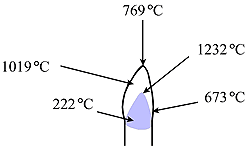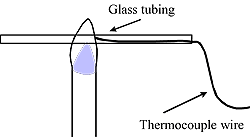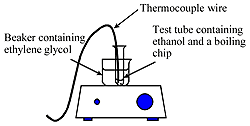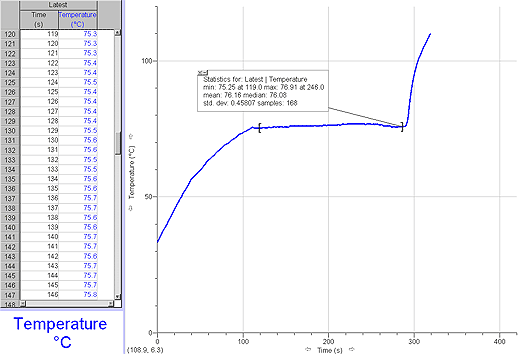Thermocouples are one of the most common types of temperature sensors. They are inexpensive, rugged, and quite versatile, as they can measure a wide range of temperatures from very low (-250°C) to very high (1700°C) values. Since they can be made from very fine wire, they also allow for very fast response times.
In 1821 a German physicist, Thomas Johann Seebeck, accidentally discovered that the junction between two dissimilar metals generates a voltage that is a function of the junction temperature. As a result of his discovery, this phenomenon is called the Seebeck Effect. The junction is called a thermocouple. The most important use of thermocouples is to measure temperature. However, the current generated by thermocouples is being used to power deep space vehicles utilizing the heat from small nuclear reactors.
The mechanism behind the thermocouple is fairly simple. When two dissimilar metals or alloys are placed in contact, a transfer of electrons occurs from one to the other. Because they are different metals, there is naturally a difference in their resistivities. Applying Ohm’s law, V = IR, a difference in resistance, R, and a constant current, I, produces a difference in the electrical potential or voltage, V. Likewise, the resistivity of metal is a function of the temperature. The voltage generated by the thermocouple can be measured and equated to the temperature. The magnitude of this potential difference depends upon the nature of the two metals and the difference in the temperature between the two junctions. For example, a Type K (Chromel/Alumel) thermocouple generates 41.3 mV at 1000°C.
Three Thermocouple Experiments from Walter Rohr
Flame Mapping

A thermocouple is one of the few temperature measuring devices that can be used to measure the temperature of flames. Simply insert the probe into the flame, and record the temperature using your Vernier data-collection program. Typical student results are shown in Figure 1. This activity could be used as an introduction to the Bunsen burner. Students will learn to use a Bunsen burner more effectively by mapping the temperatures and determining the hottest and coolest part of the flame, as well as the optimum conditions.
Bending Glass

A common problem associated with teaching students to bend glass tubing is that they do not realize that glass can still be painfully hot, yet appear cool. By inserting a thermocouple wire into the glass tubing before you demonstrate the bending of glass, as shown in Figure 2, the temperature of the glass can be displayed in a meter window on the computer screen. Bend the glass and then ask your students when they are ready to pick up the bent tubing. A typical piece of glass takes several minutes to cool to the point when students should pick it up.
Heating Curve for Ethanol

A textbook quality heating curve for ethanol can easily be created in two or three minutes by adding 1 mL of ethanol to a small (13 x 100 mm) test tube along with a boiling chip (see Figure 3). The heating bath consists of 50 mL of ethylene glycol preheated to roughly 50°C in a 100 mL beaker on a hot plate. The thermocouple wire is inserted into the alcohol and pressed against the bottom of the test tube. It may be necessary to secure the thermocouple wire to the lip of the test tube with a paper clip. The test tube is then placed in the warm ethylene glycol and heated until the liquid has completely boiled away and the temperature has risen above 100°C. Figure 4 shows the results of an actual trial. Notice that the results are within 2 degrees of the accepted boiling point for ethanol, 78°C. Ethylene glycol is preferred over water as a heating medium in this experiment because it has a higher boiling point and lower heat capacity.

Do You Know About the Vernier Thermocouple?
The Vernier Thermocouple uses a type-K thermocouple wire to measure temperatures over the range of -200°C to 1400°C. The sensor has a built-in, ice-point compensation chip, so you do not need to place a reference wire in an ice-water bath. You can simply use one measuring lead to take temperature readings. Each Vernier Thermocouple has been individually calibrated.
